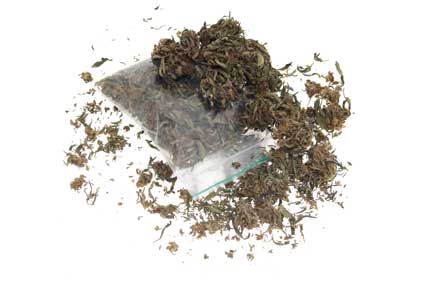In terms of strategic importance, Mexico is a principal trade and investment partner of the United States, with the nations sharing a 2,000-mile border. Intra-, inter-MDTO violence and the MDTO-Mexican government conflict undermine Mexico’s role as a key U.S. economic and regional security partner while, simultaneously, devastating Mexican stability. The nearly 43,000 drug-connected deaths occurring since President Calderon came to power in December 2006 are, at minimum, harbingers of the growing fragility in Mexico.
MDTOs have also killed Mexican military, law enforcement, judges, politicians, journalists and civilian targets. In doing so, they appear to have morphed into hybrid criminal-terrorist organizations As MDTO-linked violence has grown increasingly ferocious – including beheadings, public hangings and torture – fear has been injected into the Mexican populace. MDTOs are heavily armed with arsenals comprising grenades, rocket-launchers and rudimentary, tank-like vehicles.
The ramifications of such belligerence include the spurring of legal and illegal migration from the Aztec nation to the U.S. as well as spillover violence along the U.S.-Mexico border and beyond. As Rodney Benson, Chief of Intelligence at the U.S. Drug Enforcement Administration concurred in October 2011, “[T]he violent actions and corruptive influence of DTOs” threaten Mexican security. So much so that Mexico has even been characterized as a failing or failed state, although, this description – at least for now – appears to be overly pessimistic.
In 2011, Mexican President Felipe Calderon stated that his country was “facing terrorists.” Likewise, according to various U.S. government officials, including U.S. Secretary of State Hillary Clinton, the MDTO-induced violence plaguing Mexico is akin to insurgent activities. While terrorism and insurgency are not synonymous, with latter signifying higher levels of violence and potency, among other attributes, neither connotes tranquility. By whatever measure, MDTOs have instilled instability in the region.
The expansive drug-connected corruption prevalent at all levels of the Mexican government, particularly in Mexican state and municipal law police, further hampers the future of Mexico. For instance, Mexico’s Deputy Attorney General was on the take of MDTOs, at a clip of some $500,000 per month. Too, the economic and political power appended to the multi-billion dollar drug trade cannot be underestimated as it pervades and injects dysfunctional elements throughout Mexican society. Confirming the ubiquity of MDTOs’ reach is the fact that nearly 450,000 Mexicans earn a living through the drug trade. Incidentally, least we forget, U.S. voracious consumption of illegal drugs is partly responsible for the potency of MDTOs.
The 2011 National Drug Threat Assessment reported that MDTOs operate in 1,000 U.S. cities despite being headquartered in Mexico. Moreover, MDTOs are in control of the U.S. distribution of most of the heroin, marijuana and methamphetamines trade. Also, Mexico is the principal transport route for cocaine entering the United States.
In addition to drug trafficking, MDTOs are involved in other criminal activity, including money laundering, human smuggling, trafficking in persons, weapons trafficking (mostly from the U.S. to Mexico), prostitution, extortion, kidnapping, intellectual property theft and cyber crime.
Against this backdrop, in 2011 several U.S. congressmen, led by Rep. Michael McCaul (R-Texas), supported legislation that would designate six Mexican drug trafficking organizations (MDTOs) – Gulf Cartel/New Federation, Sinaloa Cartel, Los Zetas Cartel, Arellano Felix Organization, La Familia Michoacana and the Beltran Leyva Organization – as foreign terrorism organizations (FTOs) under U.S. law. The U.S. State Department’s September 2011 list enumerates 49 FTOs, including several Colombian hybrid terrorist-drug trafficking organizations. For designation as an FTO, the organization must be: foreign; engage in terrorist activity, terrorism, or have the capacity and intent to do so; and threaten U.S. nationals or U.S. national security, including U.S. national defense, foreign relations, or the economic interests.
In 2010, the U.S. Department of Justice proffered that nearly half of the key international drug trafficking organizations are associated with terrorist groups. As articulated by former National Security Advisor General James Jones in October 2010, “This lethal nexus of organized crime, narco-trafficking, and terrorism is a threat that… all of us share and should be working together to combat.”
By designating MDTOs as FTOs, additional legislative tools could be marshaled against MDTOs, including prohibiting the material support of MDTOs. As such, individuals, companies, or entities that are deemed to attempt, provide, conceal, or undertake material support to a MDTO could be penalized with up to life in prison and fines. Also, individuals receiving military-type training from or on behalf of a FTO can face up to 10 years in prison. In May 2011, Arizona Attorney General Tom Horne supported such designation, stating, “It makes an enhanced crime to supply aid to those organizations and that obviously would be a very powerful tool in fighting them.”
The material support statue has been very effective in prosecuting FTO (and non-FTO) connected terrorists. The extraterritorial reach of the material support statute against MDTOs and their abettors would complement existing U.S. laws targeting international drug-trafficking activities. FTO designation of MDTOs will heighten scrutiny of such entities and their facilitators here and abroad. Also, it might stimulate similar designations by North Atlantic Treaty Organization (NATO) and other countries, further impinging on the fortitude of MDTOs worldwide. Presently, some MDTOs are reported to have operations in West Africa.
MDTOs and their leadership could likewise be classified under U.S. law as specially designated global terrorist entities (SDGTEs) and specially designated global terrorist individuals (SDGTIs). These classifications would expand the U.S. government’s capabilities to block the assets of MDTOs and their networks. Similarly, individuals affiliated with MDTOs could be placed on the terrorist exclusion lists (TEIs), which would prevent individuals affiliated with the organization to legally enter the United States.
The application of the FTO framework to MDTOs would supplement the Foreign Narcotics Kingpin Designation Act (FNKDA), which denominates significant foreign narcotics traffickers as international criminals. FNKDA impairs foreign narcotics kingpin’s ability to legally conduct business with U.S. companies and persons. Various MDTO operatives have been classified under FNKDA.
Currently, the Mexican government opposes calls for designating MDTOs as FTOs for many reasons, including internal politics, foreign relations, economic factors and public relations. In associating MDTOs with terrorism through their denomination as a FTOs, Mexico could become synonymous with narco-terrorists, at the very least. At worst, Mexico could be perceived as a narco-state.
Given U.S. increasingly activist military forays against terrorists globally, Mexico also might fear that FTO designations could be an incipient step to the eventual initiation of U.S. military action against Mexico, in a new version of the “War on Terror”. The October 2011 revelations of a stymied Iranian government plot to assassinate the Saudi ambassador to the United States, that was to be outsourced to Los Zetas, demonstrates that the triggering of military intervention is potentially only one incident away.
Clearly, new, serious responses are warranted in light of MDTOs’ determination to penetrate Mexican state institutions, expand corruption, undermine transparency and governance, weaken the rule of law and debilitate civil society. President Calderon has undertaken important steps to fight MDTOs, particularly using the Mexican military and federal law enforcement.
To complement such efforts, the U.S. initiated the Merida Initiative in 2008 to aid Mexico (and Central American countries) to combat drug cartels and coordinate regional security. Under this framework, the U.S. is providing Mexican law enforcement, corrections professionals and military with enhanced training, equipment and data sharing in combating MDTOs. The U.S. Navy and Coast Guard are cooperating with Mexico in disparate counter-narcotics operations. Also, the U.S. has intensified U.S.-based law enforcement and intelligence activities at targeting MDTOs.
So too, the denomination of MDTOs and their operatives on terrorist-related lists – FTOs, SDGTEs, SDGTIs and TIEs – would compound efforts to eviscerate MDTOs’ baleful activities in Mexico and the United States. These proposed legal initiatives are critical in combating MDTOs. More broadly, Mexico – as the United States – must concurrently undertake expansive, integrative efforts and reforms across political, judicial, economic, educational and social paradigms such that future hybrid terrorist-drug trafficking organizations will have difficulty establishing themselves in communities on either side of the border.





